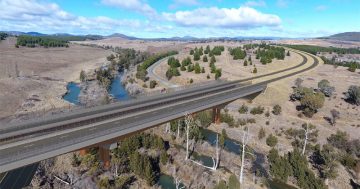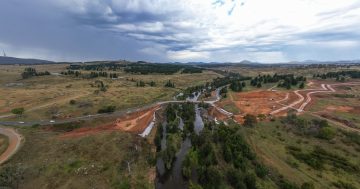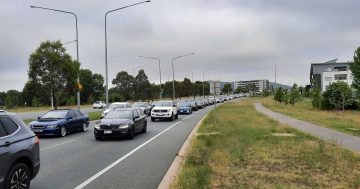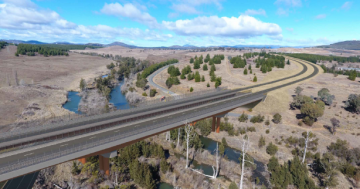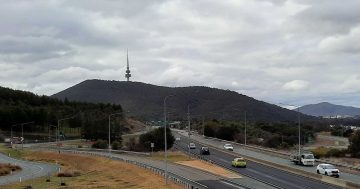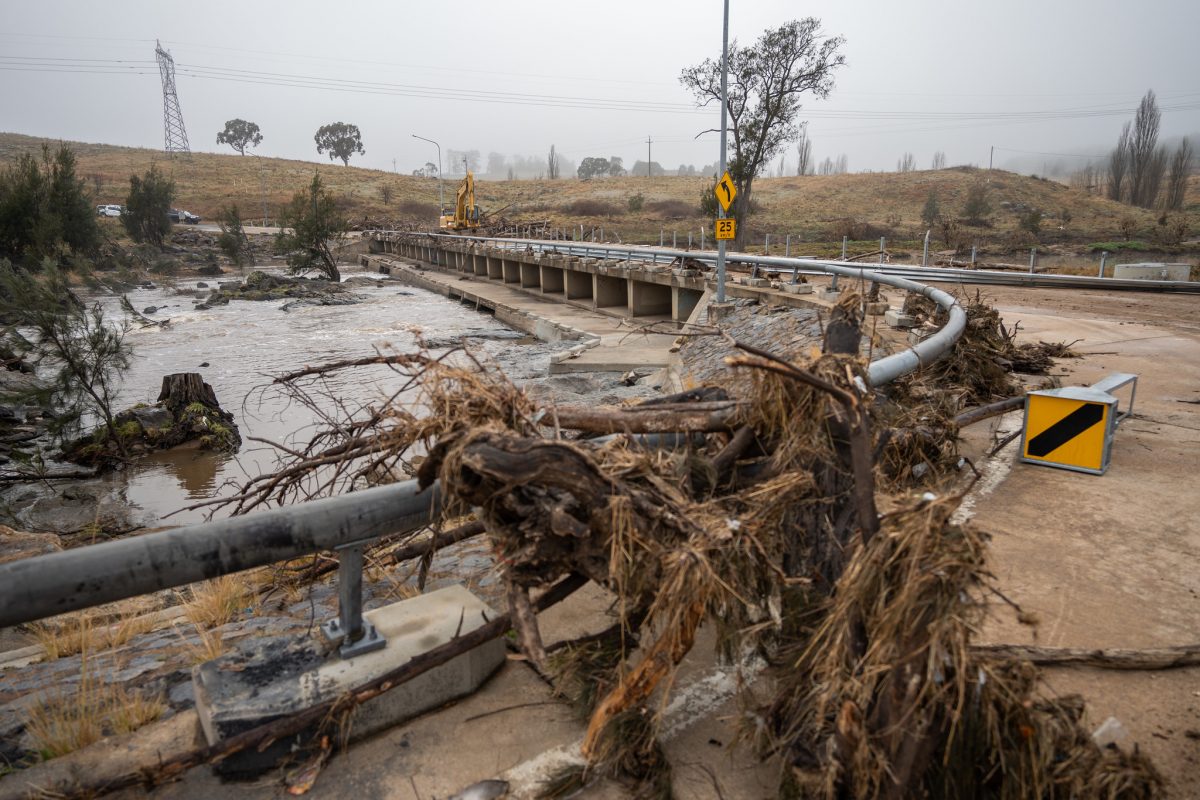
A TCCS contractor clears debris from Coppins Crossing. Photo: TCCS.
It’s going to be a fractious time for motorists in Canberra’s west over the next few years until the Molonglo River Bridge is built.
Residents in the new areas of the Molonglo Valley – and the adjacent suburbs that had to deal with the flow-on effects – were given another taste of what can happen when flooding left the lowset, single-lane Coppins Crossing blocked with debris.
The breaking of the tenuous link sent morning traffic usually bound for Belconnen pouring into Cotter Road, choking intersections and making the Tuggeranong Parkway even more of a risky bet as a peak-hour commute, repeating for the return evening trip.
It left new Whitlam residents with children in school at Denman Prospect facing a long round trip.
Motorists who found their journey times and petrol bills blowing out were left exasperated when told it would take a couple of weeks to clear the debris from Coppins Crossing.
Fortunately, Transport Canberra and City Services was stung into action and announced the site’s reopening on Friday afternoon after an intensive clean-up.
The question is what happens next, especially with the weather bureau warning of another wet spring and summer courtesy of a rare third La Nina event.
After long dry stretches, these recent seasons are testing the patience of Molonglo’s new residents – now numbering in their thousands – who look to the heavens with trepidation.
In days gone by, the closure of Coppins Crossing would only affect those who enjoyed the rural back run between Belconnen and Weston Creek but now there are major impacts to the road network, with 6000 motorists a day using the crossing.
There are growing pains enough for the Molonglo Valley as infrastructure struggles to keep up with the area’s burgeoning population but this only adds another layer of stress.
The new $175 million, four-lane bridge will provide a safe, speedy connection but it won’t be completed until at least 2025, according to the government.
There have been calls for better signage and warnings when the crossing is blocked, and some question why it takes a special contractor to be employed to clear the debris.
Simply doing nothing is an invitation to repeat performances of traffic chaos, frustrated residents and potential tragedies due to accidents or traffic jams.
TCCS should consider more protections for the Crossing to prevent the pile-up of debris, or even building a temporary higher crossing.
At the least it should have a rapid-response strategy to ensure debris can be cleared quickly to reduce the amount of time the Crossing is out of action.
The road network in coming years will face increasing strain as the construction of light-rail stage two gets underway, creating chaos in the southern approaches to the city.
Canberra does not need more peak-time pressures emanating from Molonglo due to a flooded or blocked Coppins Crossing.
It may place extra strain on the budget but the people of Molonglo will be grateful if the Government can find a remedy before the new bridge delivers that much sought-after reliable run.












